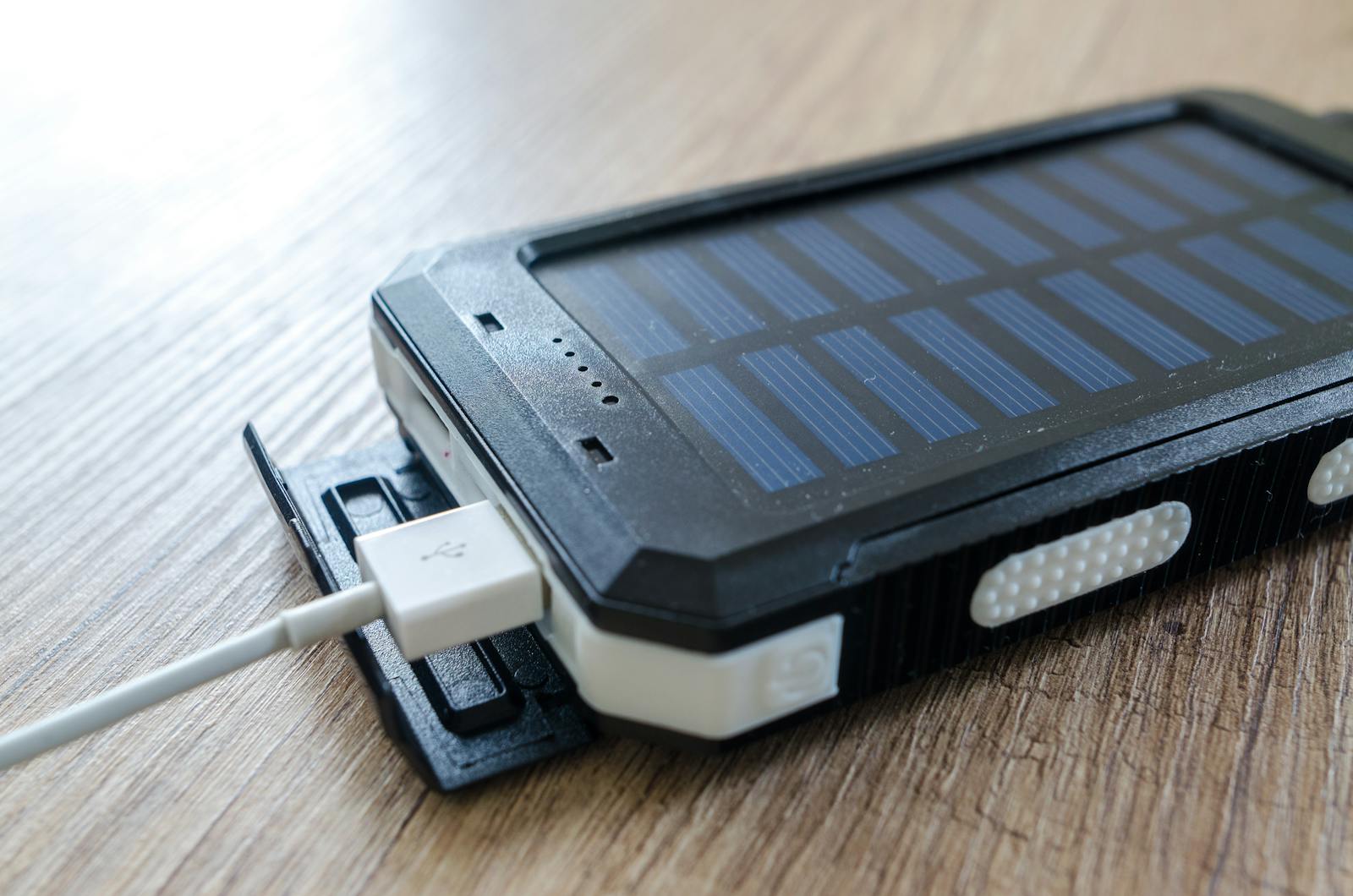Ever been out enjoying nature, maybe camping or fishing, and your phone dies? Or perhaps you’re working remotely from a cool spot, but your laptop’s about to give up the ghost? Yeah, me too. It’s amazing how every year the tech for off-grid living just keeps getting better. We’re seeing more features, more power, and way more portability than ever before.
Think back to the old days – or imagine them if you weren’t around! If you wanted portable power, you were practically lugging a suitcase filled with what felt like 100kg of batteries. Thankfully, those days are long gone. Now, portable solar generators have shrunk so much you can genuinely call them “ultraportable.” These are units you can actually easily carry to your cabin, campsite, or wherever your adventures take you.
Having a reliable power source when you’re off the beaten path, or even during a power outage at home, is becoming less a luxury and more a necessity. That’s where these modern marvels come in – these little powerhouses are pretty darn handy.
Finding the right one can feel like searching for a needle in a haystack, though. There are tons out there! So, I’ve waded through the options and put together a list of 6 top contenders for 2025. These aren’t just random picks; they balance portability (because who wants to lug a brick?), power, and some neat features. Let’s check ’em out.
EcoFlow RIVER 2 + 160W Panel
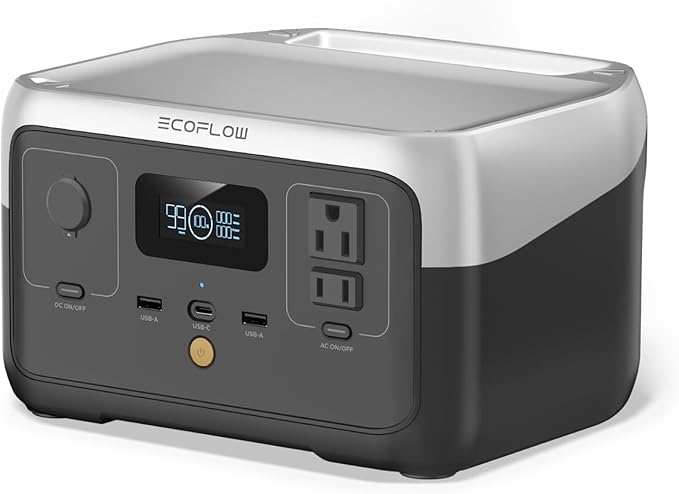
You know when you need power, like, now? The EcoFlow RIVER 2 gets it. This thing can charge from zero to full in just an hour if you plug it into the wall. That’s faster than making a pot of coffee! Even with its 160W solar panel buddy, you’re looking at a full charge in about 3 hours on a sunny day – not bad at all.
- Details: 240Wh capacity | Weighs just 3.5kg / 7.7 lbs
- Why It Rocks: It’s incredibly light and small, perfect for tossing in a backpack for a hike or a day by the water. It uses a LiFePO4 battery, which basically means it’s safer and will last ages (think 3,000+ charge cycles, easily 10 years). It pushes out 300W, enough juice for phones, cameras, laptops – you know, the essentials.
- Perfect For: Anyone who loves the outdoors and needs quick, dependable power without the bulk.
Bluetti Handsfree 2 Backpack Power Station
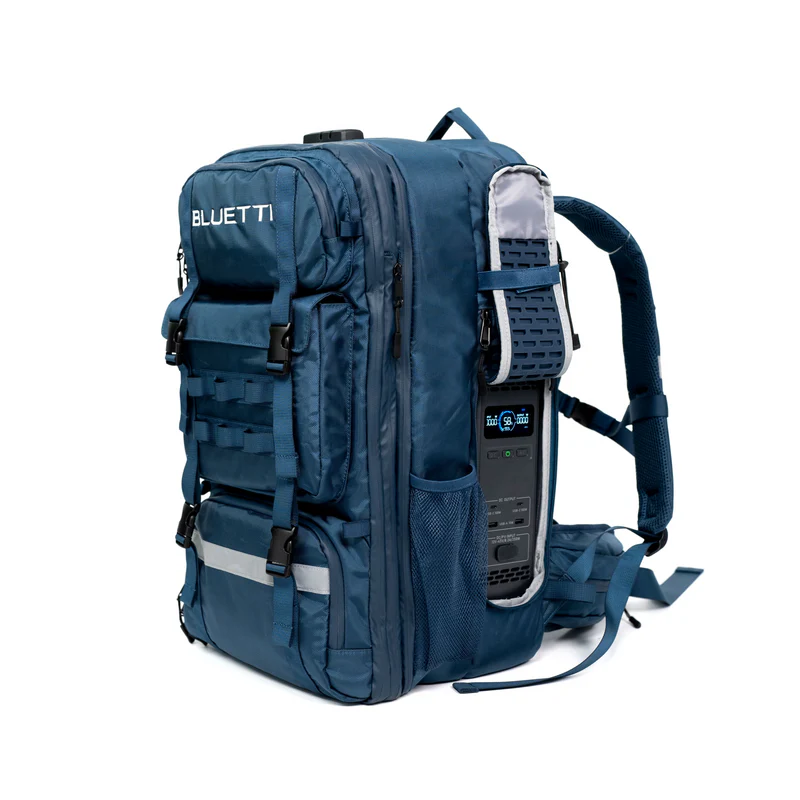
Okay, this one’s clever. Bluetti basically built a power station into a backpack. Talk about hands-free! It’s a 60L backpack, so you’ve got space for your other gear too, though keep an eye on the total weight (up to 66 lbs loaded).
- Details: 512Wh capacity | 7.5kg / 16.5lbs
- Why It Rocks: The backpack itself is weather-resistant (IPX4 rated), which is great for unpredictable weather. With 700W output, it can handle more demanding gear like drones or maybe even a small projector for movie night under the stars? It also has UPS functionality – meaning if the power source cuts out, it switches over superfast (20ms) so sensitive electronics don’t just shut off. Handy! Plus, plenty of ports (USB-C, USB-A, AC).
- Perfect For: Campers, photographers, or anyone who needs decent power but wants to keep their hands free while moving around.
DJI Power 500
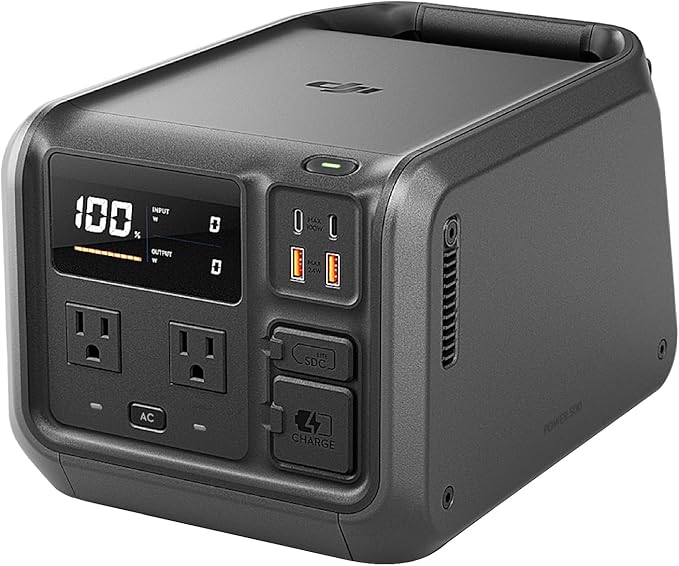
DJI knows drones, and they built this power station with drone pilots in mind. If you’re constantly needing to recharge drone batteries out in the field, this could be your new best friend.
- Details: 512Wh capacity | Compact design, 7.3kg / 16lbs
- Why It Rocks: It features dual 100W USB-C ports specifically designed for fast-charging devices, especially those power-hungry drone batteries. It’s also super quiet (around 25dB), which is nice when you’re trying to enjoy the peace and quiet outdoors. It charges quickly (80% in under an hour via AC) and is built tough for field use. Solar charging? Yep, it does that too.
- Perfect For: Drone enthusiasts and content creators who need reliable, specialized power on location.
Anker SOLIX C300
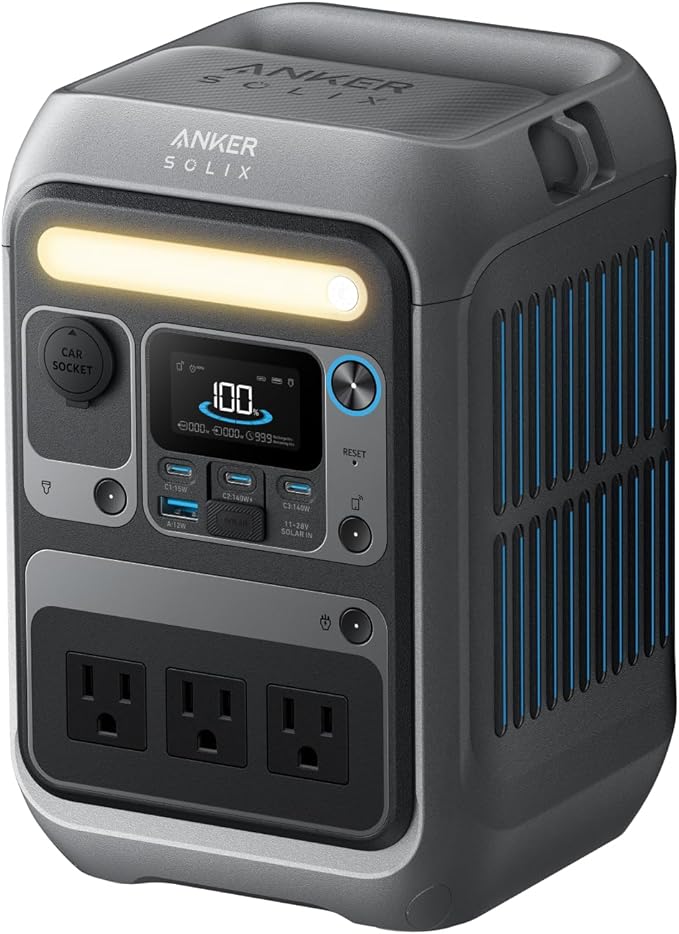
Anker’s known for reliable charging gear, and the SOLIX C300 brings a neat twist. Its vertical design saves space, which is always a bonus when packing. But the coolest part? Detachable camping lights!
- Details: 288Wh capacity | 6.17lb / 2.8kg
- Why It Rocks: Those built-in lights (with 3 modes) are genuinely useful for setting up camp or finding your way in the dark. It even has a little pop-up light. It charges quickly via solar and uses that trusty LiFePO4 battery chemistry. It hits a nice spot between being feature-packed and budget-friendly.
- Perfect For: Campers, van-lifers, or anyone who appreciates multi-functional gear and needs something compact and versatile.
Jackery Explorer 300 Plus
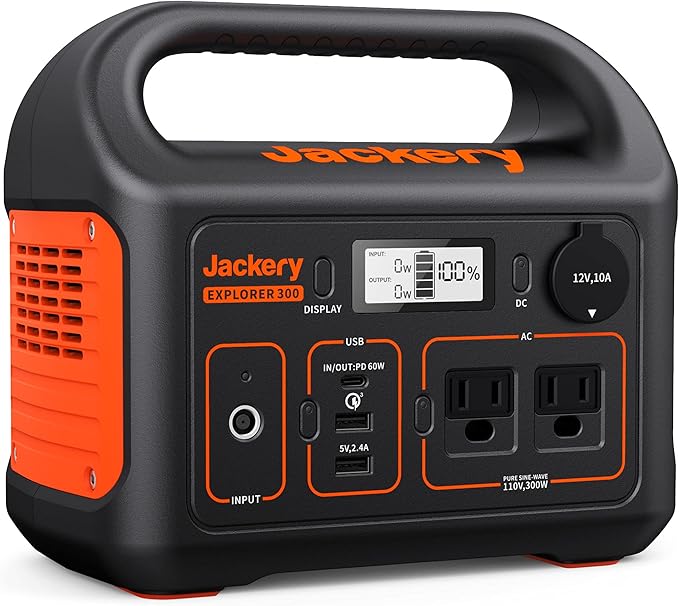
When you need something dependable that won’t weigh you down but still offers a bit of oomph, the Jackery Explorer 300 Plus steps up. Jackery is a well-known name in the portable power game, and this model hits a sweet spot for many.
- The Skinny: 288Wh capacity | Weighs 8.6 lbs
- Why It Rocks: It’s nicely lightweight, but here’s a cool feature: it’s expandable. That means if you find you need more juice down the line, you can often add an external battery. Versatility is always good, right? It charges up pretty flexibly – solar, wall outlet, or your car. And get this: under ideal sunny conditions, it can recharge via solar in about 1.8 hours! That’s quick. It also runs super quiet (around 25dB, so no annoying hum) and you get a solid 90% usable capacity from the battery.
- Perfect For: Minimalist travelers, or really anyone who values reliability and fast solar charging in a compact package. Great for weekend trips or ensuring your essential gadgets stay alive.
EcoFlow River 3
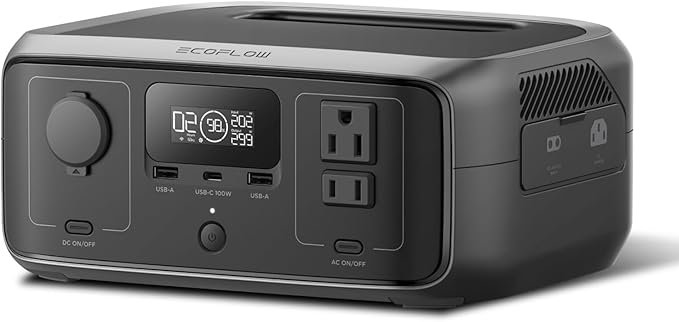
Wait, didn’t we already talk about EcoFlow? Yes, but the River 3 is another strong contender in the ultraportable space, often seen as a slight update or variation. It shares that awesome fast-charging capability.
- The Skinny: 245Wh capacity | 7.8 lbs (3.5 kg)
- Why It Rocks: Like its sibling, it charges fully in about an hour via AC. It offers a good mix of outlets (2 AC, USB-C, car port) for flexibility and is also IPX4 water-resistant – handy for splashes or light rain. It squeezes a lot of usable power out of its battery.
- Perfect For: Quick weekend getaways, emergency power backup in an apartment, or anyone needing reliable, fast-charging power in a compact form.
Okay, So What Really Matters When Choosing?
Looking at specs is great, but let’s be real, what should you actually think about?
- Weight & Size: This is the “ultraportable” category, right? If you’re actually carrying it far, under 3-7.5kg / 7-10lbs is key. Anything heavier starts feeling less “ultra” and more “luggable.” Think about how you’ll carry it. Backpack? Short walk from the car?
- Battery Type: You’ll see LiFePO4 mentioned a lot (like in the EcoFlow and Anker models). There’s a reason – these batteries generally last much longer, have more charge cycles and are considered safer than older lithium-ion types. It’s often worth paying a little extra for this.
- Solar Charging Speed: Don’t just look at the generator; consider the panel size needed. Those 3-4 hour solar recharge times usually assume perfect sunny conditions with the right panel. Reality might be slower. Still, faster is better when you’re relying on the sun!
- Power Output (Watts): Match this to your gadgets. Phones and laptops don’t need much (under 100W usually). Drones, small coolers, or multiple devices need more (300W, 500W, 700W+). Check your device’s power requirements – don’t expect these little guys to run a microwave!
Finding Your Power Solution
Choosing an ultraportable solar generator really comes down to your specific needs. Are you charging camera gear deep in the woods? Just keeping phones topped up at a festival? Need backup for your internet router during outages? Each of these scenarios might point you to a different model on this list.
The good news is that technology keeps getting better – lighter, faster, more efficient. These six options for 2025 are all solid choices depending on what you value most. If you want to get really technical, checking out reviews on sites like CNET or TechRadar, or even the manufacturers’ own blogs (like EcoFlow’s), can give you deeper insights.
Hopefully, this gives you a great starting point. Happy trails and powered-up adventures!

